Two Excerpts from The Springfield Overland Trail
(From pages 165-168)
Although Sam was on a watchfulness duty, he could not help thinking of his feelings about the American Civil War. Since July 13, 1864, Sam had continually marched for long seven days with his regiment before he participated in battle. Later on he would become truly weary with long marching, gun battles, 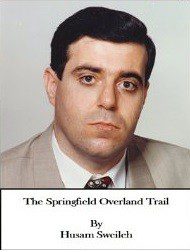 and the sights of the dead and the wounded among soldiers and civilians. He felt it essential that the war be over. Still, he was lucky not to have sustained a single battle wound during his service at the Civil War.
and the sights of the dead and the wounded among soldiers and civilians. He felt it essential that the war be over. Still, he was lucky not to have sustained a single battle wound during his service at the Civil War.
Sam had been uncomfortable since he put on his Union soldier uniform. The uniform’s thick-cloth coat or jacket was dark blue buttoned up to the neck. His thin-cloth pants were light blue with a dark-line running down along each external side. His laced shoes were black and hard on his feet which were sore with long marching.
Although the jacket and pants provided a becoming contrast in colo r, the uniform was wholly made of wool. Therefore, the uniform was rather warm and was not comfortable in warmer climates like that of the State of Georgia. As a Union soldier, Sam was also not permitted to appear in public in his issued cotton shirt, but he had to have his jacket on. While marching in rather warm weather towards Atlanta, Sam was constantly feeling that he was about to have a heat stroke.
The Civil War had started three years before Sam was drafted into the war effort. By that time the States had been divided between the North Union and the South Confederacy. Many more states had however
1
supported the Union, including the State of Illinois. As part of the first major Union army attack on the defenses of Atlanta a week on, the Battle of Peachtree Creek would be fought in Georgia in the afternoon of the twentieth day of July, 1864.
In their night watch-and-ward duty at the edge of the campsite, Sam and his veteran comrade soldier William O’Neil were privately talking about the rumor that a battle was close at hand north of Atlanta. It later became Sam’s first battle. Unlike his comrade Sam, William had a passion for heroism and killing the enemy. William told Sam “I should be given a hero’s medal because in the last four battles, I shot and killed four enemy soldiers in the back while they were fleeing from the battlefield.”
Trying to make more sense, Sam said, “Under the legal and moral principle of self-defense, one may kill or injure only armed fighting soldiers, not soldiers fleeing the battlefield. Also, war is not heroic because one army of the two armies participating in the conflict will necessarily outnumber the other.”
In the interest of clarity, Sam added, “Our task as soldiers is to end the war by defeating the enemy’s army, not killing non-fighting fleeing soldiers.”
William argued, “The south has started the war.”
Sam promptly retorted, “A started war must be ended; who started the war is not a moral or legal justification to wage war forever. No country has ever won a civil war; everybody loses in a civil war.”
Sam went on to say, “Under the self-same principle of self-defense, a country may wage a war against a foreign army which has first resorted to armed conflict.”
William said, “A civil war is a regular war, and a civilian must be killed if he assists an enemy soldier.”
Careful not to encourage civilian bloodshed, Sam retorted, “The soldier may have forced the civilian to help him at the gun’s point.”
Having no arguments left, William confirmed, “I will hold firm and fight back no matter what happens at the frontlines.”
2
Sam believed that William thought that he was a hero because he had been marching with the victorious army and because he had killed four fleeing soldiers. Sam thought that if the situation had been the other way round, William would have noticed that his comrades had been outnumbered. Had William retreated before a superior force, he would not have felt heroic.
On the following day to Sam’s first battle after hearing that he was wounded, Sam was unable to talk to William who was asleep in the field – hospital ward. When Sam asked an army surgeon about William O’Neil, the field-hospital surgeon told him that during the battle attack, William had been shot twice by a rifle in the left hand at its outer edge. Sam figured out that William had to have been fleeing when he had been wounded.
What immediately came to Sam’s mind was the possibility that William’s hand was no longer usable and that his wounds might develop gan grene later on. Also, Sam thought that after William had been shot while fleeing, he had to have changed his standing with regard to shooting fleeing soldiers.
After a short rest, Sam went to visit William again in the field hospital ward. Protruding from under a blanket, William’s left hand was wrapped in bloody bandages, yet he was covering his head with the blanket in his bed. So Sam went to see the army surgeon again. The surgeon told Sam that William would most probably lose the use of his hand and could infect with gangrene.
On that day the commanding officer ordered that the regiment remain in the same place for a week. The soldiers were assigned the usual tasks of collecting equipment, guarding the encampment, burying the dead, and caring for the wounded.
When Sam went to see William in the afternoon of the following day, William looked sullen, pitiful, hopeless, and weak. After all, he had been fleeing the battle field when an enemy rifle had shot him twice. His wound proved his perceived act of cowardice whereas William himself advocated shooting fleeing soldiers. His hand was now swollen and dark with gangrene.
Sam consoled William with few encouraging words. He told William to take care of himself and to prepare for his civilian life now that his fighting days were over and done.
3
The regiment in which Sam served and the other regiments’ soldiers were ordered to prepare for marching the following day. So Sam went to see William for the last time before leaving with the army regiments. Sam was with William when the surgeon came to examine William before the operation.
The surgeon examined the gangrene course up the forearm. It was clear that it had to be amputated from the elbow down. William asked, “Doc. Am I going to lose the arm from the elbow down?”
“I’m afraid so. Many soldiers have lost arms,” replied the surgeon.
“One does not lose for his country; one sacrifices for his country,” Sam corrected.
The surgeon nodded his head twice in approval and said to Wi lliam, “We ran out of pain-killers for the amputation. So we must do without.”
William said, “The amputation will not give me pain half as much as my hand had after it was gunned.”
————————————————
————————————————
From pages 187-190
When the supper was done, Georgia, Sam, Ben and Edward heartily ate their roast venison supper with dried bread and broth. Each of them was served an originally more than a pound of what had been raw venison.
After they had had their warm and delectable supper, Sam who liked frontier stories asked Edward, “Could you please tell us how your beaver hunting in the Rockies was like at the time?”
Happy to reminisce and to entertain his guests, Edward grunted, “I will tell you the story of me and my partner’s beaver-fur hunting expedition.”
4
After a short while of thinking, he gave the following account which registered vividly on Sam’s mind:
We reached the Snake River Territory on May 18, 1842 by five o’clock. During the night my partner, Jason, and I held council. After a short discussion, we decided because Jason was not as good as me in exploring the forest streams and shooting beaver, I would be the hunter of not only fur-carrying beaver but also game’s meat for our camp’s larder.
On his part, Jason would be the camp-keeper and camp-guard. He was supposed to remain vigilant in the camp, cook our breakfasts and suppers, as well as gather wood and chop wood for making our campfire.
The next day I started by exploration for immediate and later beaver hunting. So, I explored all nooks and trails of the heavily- wooded Snake River Territory. I later remembered the detailed layout of the forest and the beaver-teeming streams and would record them in my maps after dinner in our base camp.
As a free hunter in beaver hunting grounds, I had to know the geography and topography of my hunting grounds. My knowledge of the beaver-stream grounds was later that of the one who knew the streams’ basins and how best to hunt beaver in them. I knew where streams were shallow so as to be forded, where the streams water was deepest so as to be boated, and how many beaver colonies were at every likely-looking stream and valley.
To excel at my job, I had to know the beaver hunting trails and the game trails. My daily livelihood, safety, future wealth, and those of my fifty-fifty partner depended upon the accuracy of the information of all these things.
I was a crack shot from way back, so I did make a good career as a beaver fur hunter. In terms of the number of beavers I brought in, I must have been one of the foremost huntsmen. Still, our remainder days of the hunting season were numbered. We had up to the end of October or the first two weeks of November to wrap our hunting season.
I always made sure-fire beaver shots for its valuable fur. At that distant time, the beaver fur was being used for making fashionable
5
beaver hats. The beaver fur was priceless and later brought us ten bucks apiece. I was determined to make money for myself and my partner. Before I was to be done, I had to bring in more beaver pelts than many rival trappers. There were little fortunes to be made in the beaver trade. After all, I needed to make two fortunes: one for myself and another for my partner.
I pretty much followed the same routine in hunting beaver. Every morning I rose from bed around six in the morning, put on my outerwear over my long Johns, and ate my breakfast of roast or fried beaver meat. As soon as I got through all this, I took out my rifle, powder horn, flints, large beaver sack, and lead balls pouch. By and by I readied myself for a long hunting day.
After leaving the camp, I walked about half a mile to the beaver streams. As I was getting near streams, I did watch out for beavers and signs of a beaver colony in the streams. Once sure there were beaver signs, I lurked quiet behind a natural cover, putting myself in readiness to shoot a beaver on sight.
I would later wait and watch. Whenever beavers showed their heads up the water surface or less commonly dared into the stream banks, I often got them in the head with my first shots, for I was a crack shot. After I had shot the beavers dead, I took off my boots and waded into the water upstream to the floating dead beavers.
When I had collected the dead beavers, I waded back downstream to my rifle and boots. Once there, I yanked the dead animals into my large beaver sack. Beavers constituted both a fur money and fresh meat. Every evening I daily came again with my sack laden with five to six dead beavers. I had correctly reckoned hunting was a faster way to obtain beaver fur than trapping.
In our base camp, I first skinned the beavers and placed the precious furs in packs in our neighboring cave cache. I next drew up a map of the streams I depleted and planned to proceed to other beaver-rich streams.
By that time of the year, I could see the forests of the Rockies had been teeming with beaver trappers and hunters. The trappers had mostly come from Missouri on boats headed up-rivers; the boats had been boarded with men dreaming of quick riches.
6
By that point of time, the month of September was chiefly gone, and there was little time left to the end of the hunting season. I knew by the end of October, beavers would hide behind their frozen mud for the winter. I had to hurry along my hunting work whose money proceeds were to be divided two ways.
I did explore in big earnest. I learned beavers were found in wooded areas near water courses where willows, cottonwoods, spruces, firs, aspens, poplars, osiers, and birches were plentiful. I both traipsed and traversed streams flanked by densely wooded forests. So, I approached a stream at the sign of a beaver, a beaver dam, a pile of twigs, or a chopped-down log. Before long I lurked for the playful beavers before they dived into their dam water.
After my new streams network no longer harvested the daily five or six beavers, I ever found beaver upstream higher in the Rockies. Or else, I went over a low-lying hill into another basin and to another creek. In my unhurried way, I cleaned out all the streams in my work area.
Beaver hunting was hard, lonely and dangerous. I reckon I sometimes feared lest my foot should be caught in beaver trap or even bear trap. Also, I was often cold and wet to the neck from wading in those icy stream dams. There were grizzly bears and bandit trappers all around, so I had to be watchful and wary like a hunted wild animal.
I learned that beaver colony exploration was the spearhead of the fur hunting. Beaver trappers could clean out a beaver colony when they found it. They were all on the lookout for beaver dams; they all made for the beaver streams. I had planned to sell our beaver pelts to the fur traders of the American outfits because they paid better prices than did the agents of the other fur outfits.
When it had gotten near the middle of November, Jason and I had eleven packs of beaver pelts. Each pack contained almost one hundred beaver pelts. The harsh Rockies’ winter was fast setting in, and beaver was becoming more and more elusive.
Jason and I discussed the matter and decided that it was time to wrap it up and to hang our beaver-fur hunting boots. So, we decided to ride to the town of Horse Creek and to sell our furs and divided our sale money.
7
The following morning we washed up, munched our early meal, and downed our morning coffee. At that time, cold as it was, we loaded our heavy packs of pelts on our packing horses and threw our saddles on our riding stallions. As we steered our led pelt- packed horses, we mounted our two stallions and moved out southeast in our way to the rendezvous town of Horse Creek. The distance from our hunting grounds to our destination city was some
200 miles.
We’d both cleaned up 1,100 pelts of beaver furs with a cash price of 11,000 bucks in the rendezvous town of Horse Creek. We’d drop the pelts at Horse Creek and take two drafts on Saint Louis: one for each of us. Then in Saint Louis I took another bank draft drawn on the Frontiers Bank of Springfield. I used to live in Springfield, Illinois, before going to the Rockies; afterwards, I lived here.
Remembering his former intention to write his biography, Ben asked,
“Have you been writing your book on your life as a mountain man?”
Edward replied, “Yes, I have. As a matter of fact, I have finished the manuscript six months ago.”
Impressed, Sam asked, “When are you planning on publishing it?” Edward replied, “Yes, I am. I have sent it to a publisher in Chicago who
showed some interest. I’m still waiting for them to get back on me on
that.”
Indian Review | Authors | Literature & Short Story, Excerpts | Visit us for more literature, poetry and short stories from across the world.
Indian Review | Authors | Literature & Short Story, Excerpts | Visit us for more literature, poetry and short stories from across the world.
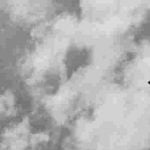

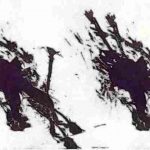

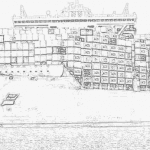
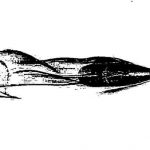
Leave a Reply